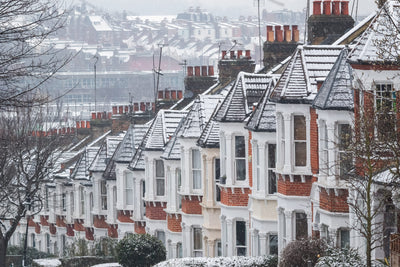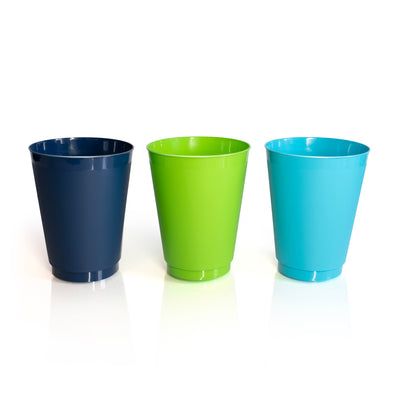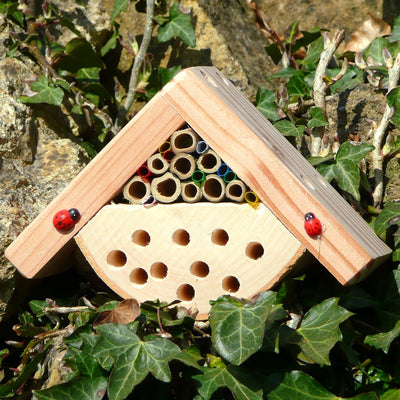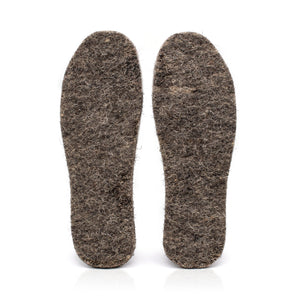As we are now officially in tree planting season, I thought it was a perfect chance to give you an update on our Community Interest Company, Buy Land Plant Trees. For those of you that don’t know, around 20% of the profits from every purchase you make with us goes towards Buy Land Plant Trees, where we buy agriculturally poor land and plant it with lots of lovely trees! It helps us to help you reduce your carbon footprint as well as a whole host of other benefits such as habitat creation and flood prevention.
Earlier this year, we bought our second field, this time a much bigger one (13 acres!) and have spent the last few months ‘reccying’ it. The field is pretty wet, had poor drainage and has been left to its own devices for about 10 years, so you can imagine how overgrown it is! However, this has helped us to work out what the terrain is like by identifying what is naturally growing in different areas of the field. We have also been around a few times with a spade to check what the soil is like across the field, splitting the field up into three different categories – wet areas, very wet areas and drained areas. All this exploration has meant we’ve been able to work out what species of trees are best suited to go where.
The next stage is to actually plant the trees!
I got in touch with Cumbria Woodlands about the project and they are just as enthusiastic as we are about Buy Land Plant Trees. They have helped me put together a proposal for a grant from the United Utilities Tree Fund. The proposal has been a work in progress over the last couple of months and I’ve been spending lots of time, learning, researching and going back and forth with Cumbria Woodlands to work out the best way to plant the trees (you’d be surprised how many different ways there are to go about it!).
Initially, the proposal was for planting 5,000 trees but…I wanted more! So, I sent the proposal to a friend of mine, Neil, who is very clued up on all things forestry asked him about whether he thought the Miyawaki Method of planting trees might work. It was a method I’d heard about and had been wanting to try but needed someone with more expertise to support me in my claim.
The Miyawaki Method was created by a Japanese botanist, Dr Akira Miyawaki. The concept helps to create forest quickly, amplifying the natural growth process by planting trees in dense clusters. When they are planted close together, trees can use their root systems to communicate with one another (I promise, it’s true!), sharing information and nutrients. This helps the trees to force each other up at a much faster rate. Have a read about Peter Wohlleben’s wood wide web to find out more. It really is fascinating!
What the Miyawaki Method will create is a very natural looking, random woodland with spaces in between for meadowland and wildflowers in a shorter space of time. Think of it as a mosaic of habitat types!
I went back to Cumbria Woodlands with the Miyawaki Method and they were interested in giving it a go. We rewrote the proposal and worked out that we could plant 20,000 trees using the Miyawaki Method with the same budget! Why? Well, the original proposal included stakes and tubes for each tree but because we are planting in dense clusters, we don’t need them! The trees will be densely planted in 5-10m diameter areas across the field. Each tree planted within those spaces will be about 30-40cm apart (rather than the 2.5m spacing between every tree that was initially proposed). This makes the tubing unnecessary because the dense planting means the trees will protect each other and establish themselves at a much faster rate.
Each cluster will need to be very well mulched, to ensure that the soil around them is enriched enough to help with the fast growth. So, our plan this month is to scythe the field, shortening some of the vegetation. This will act as brilliant mulch, but we’ll also be slotting one of our mulch mats round every tree (so yes, that does mean 20,000 mulch mats!) once they are planted to give them some extra ‘umph’!
The grant application is now in, so we should hear back by the beginning of November about whether or not we can go ahead with our Miyawaki Method of planting! I’ll keep you updated but, in the meantime, keep your fingers crossed for us and keep buying all things Chimney Sheep to help us plant EVEN MORE trees!
Foliage Focus
Alder (Alnus sp.)
FACTBOX:
- There are 30 species of Alder including the Common Alder and Grey Alder
- The tree has a slender conical shape, grows to about 20 metres high, and lives for around 60 years. Purple or grey leaf buds turn into leathery, dark green leaves, with a serrated edge.
- Alder is a member of the Birch family and a distant relation of the Elm. It is a pioneer species, meaning it is one of the few species able to populate an area that’s too barren for most others.
- Alder likes wet terrain and can cope with being inundated with water (so it is great for areas with poor drainage, like our other 7-acre field), growing pretty fast in these areas!
- Alder is a nitrogen-fixing tree, which means it can convert airborne nitrogen into soil-based nitrates through nodules on their roots. This helps them to grow and other trees close by too!
- Alder is often used to line rivers and streams as its roots help to stabilise banks. This provides lots of different habitats for lots of different species. For example, the roots can shelter fish from predators and form cosy nest sites for otters. Alder leaves provide food for invertebrates such as the larvae of caddis flies, stoneflies and water beetles. These, in turn, are preyed upon by fish including salmon and brown trout. Bats and birds love roosting and nesting in them too!
- Alder has tiny cones that open and disperse seeds on the currents of wind and water. The clever seeds are flat, waxy and contain air bubbles, which allow them to float and be carried away by water to disperse in other areas.
- We’ve had great success with the Alders in our 7-acre field. Just look how big one of our Alders has grown in the space of one year! It was just knee high in March 2019, then taller than me in September 2019 and tall as a tree in 2020! Pretty impressive hey?























